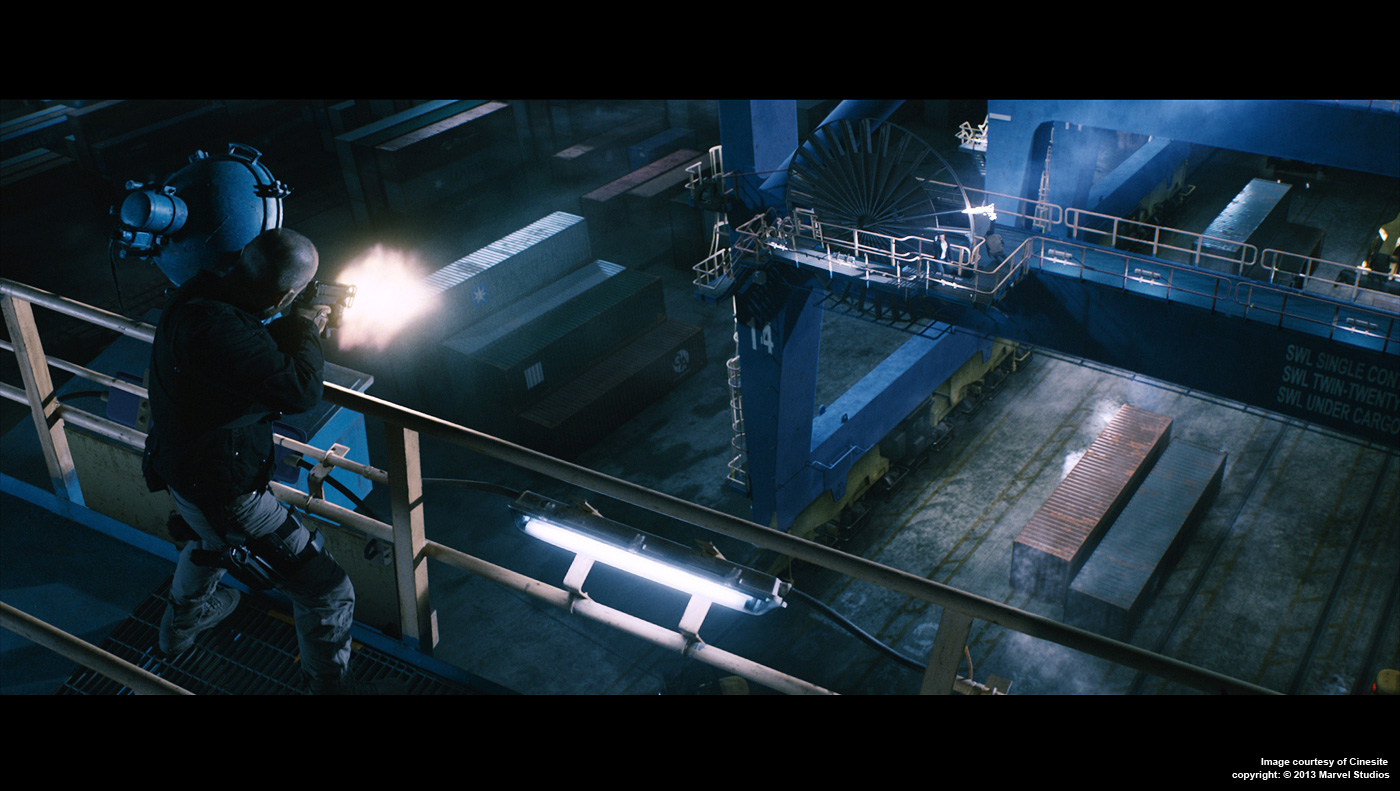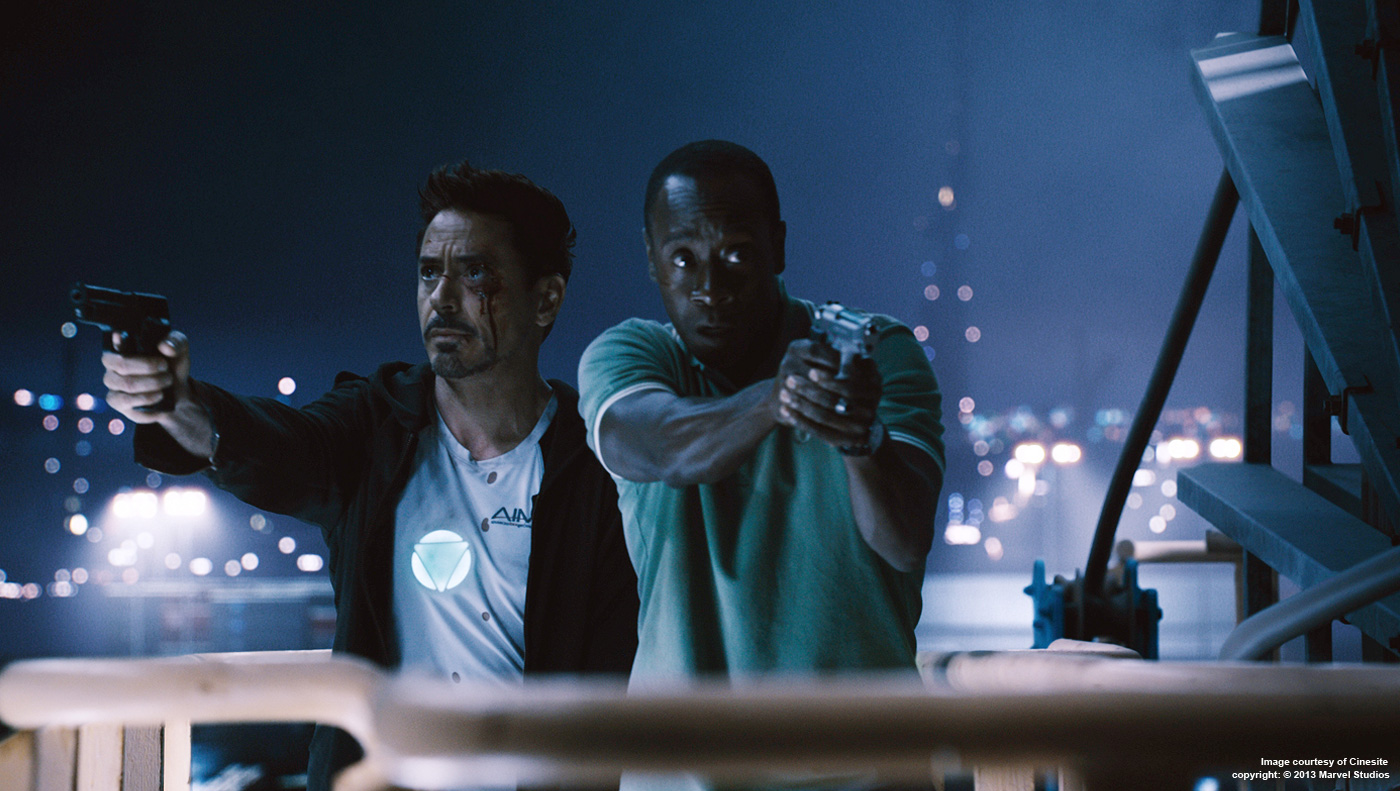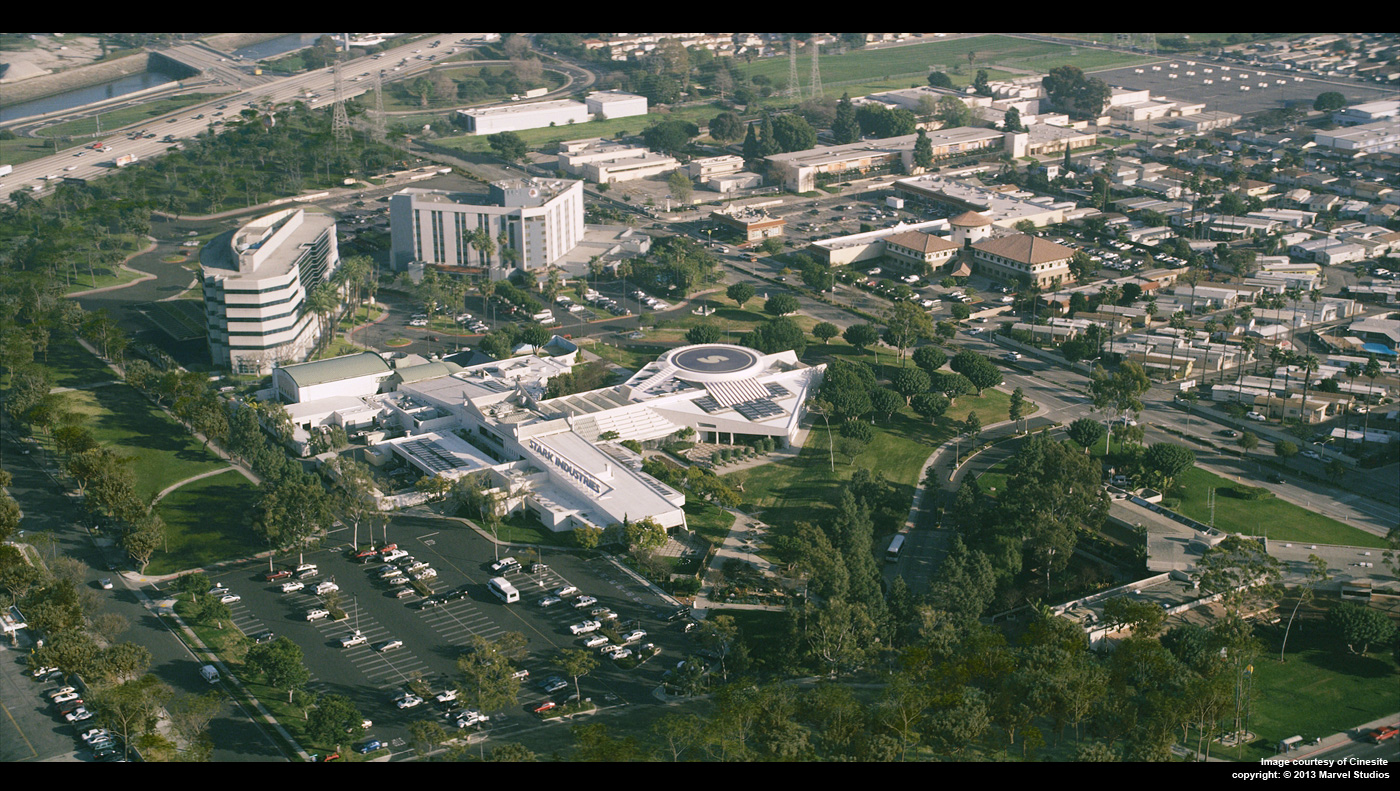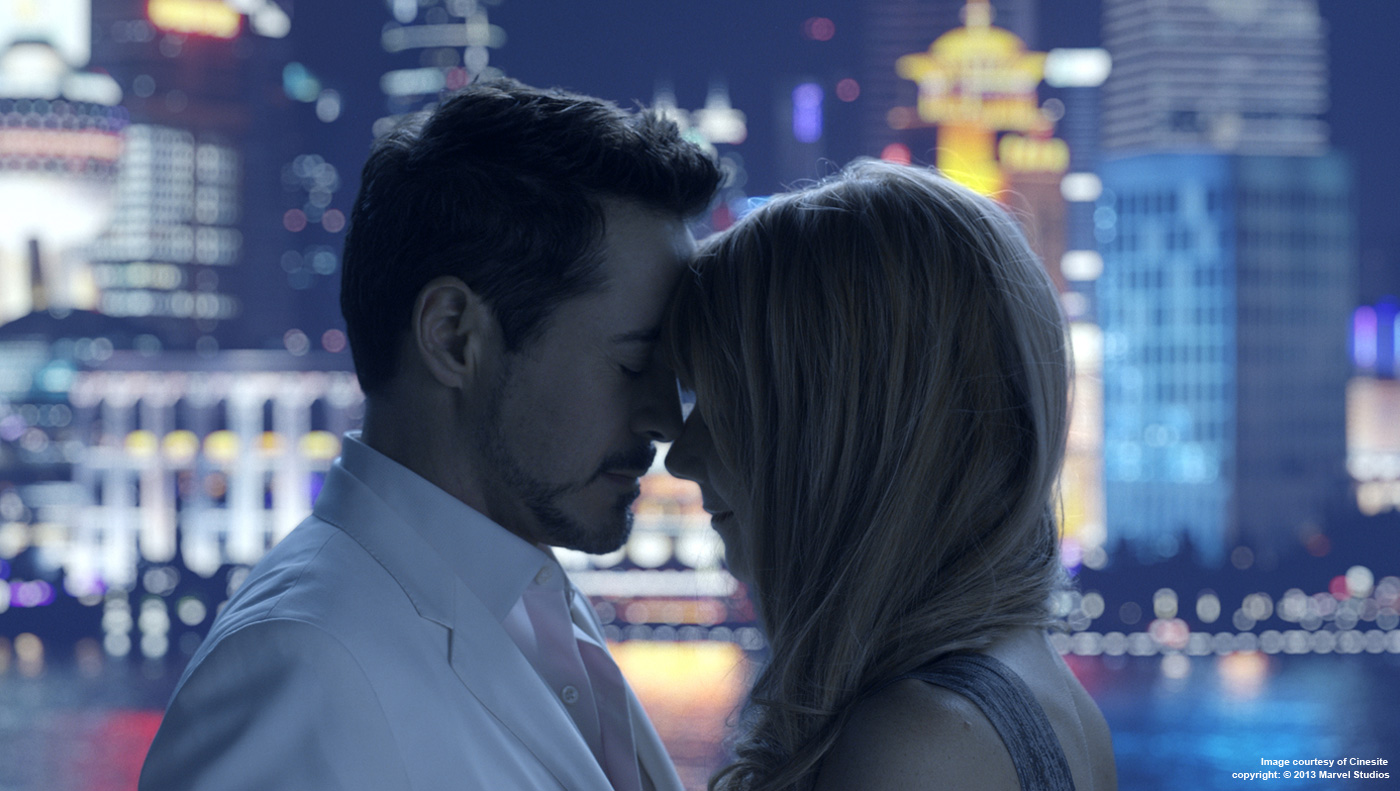Simon Stanley-Clamp explained the Cinesite’s work on PIRATES OF THE CARIBBEAN: ON STRANGER TIDES on his last visit to The Art of VFX. He then worked on JOHN CARTER and today he explains his work on IRON MAN 3.
How did Cinesite get involved on this show?
We were approached by Production and asked to bid on shots from one sequence that had grown, so over spill from another facility, initially, then after our award the other facility were able to take back some of the work, but once involved, Marvel kept topping our shot count up to the original award.
It’s the first Marvel film at Cinesite. How did you approach it?
Because of the time constraint of 9 weeks from award to delivery, my approach was to keep the show as straight forward as possible, not try out any new software, any new procedures but keep it simple, stick to what we know, keep communication lively and active, so a relatively small team and little things, like having them all seated together. I plundered our physical effects library for elements, rather than chew through ours of FX sims, as a first port of call so I’d say 85% of the (SFX/FX) elements we added were manipulated practical passes.
How was the collaboration with director Shane Black?
From brief, through production to delivery – all our dealings were with Christopher Townsend.
Can you tell us more about your work with Production VFX Supervisor Christopher Townsend?
Pre award, Chris kicked off with a ninety-minute brief of the work. After that and into production we communicated via conference call and Cinesync to review iterations of our work at video res, simultaneously shipping full res data, from them to review during their daily sessions in LA. Initially twice a week, this escalated to every day as we neared final delivery. I don’t know how he managed it, staying on top of all the work, from 18 vendors, always remaining calm, good humored and consistent with an eye for detail which was incredible.
What have you done on this show?
The beginning of the final Marina assault, with Tony Stark and Colonel James Rhodes – full digital environment, adding green screen foreground action and adding full digital environment ‘behind’ green screen foreground – lots and lots of in car green screen comps across multiple scenes, product additions, product removals, set extensions, actor replacement.
How did you approach the gunfight sequence?
The location had been fully modelled by Weta Digital – which was the corner stone to building up the environment. It took about two weeks to fully ingest all the data from them – that’s all models and textures, Lidar of the location, survey and reference. During that period, we fast tracked all plates through tracking and did initial simple grey shaded layouts of how the environment would sit in each shot, but enough for Chris to be able to sign off on. Some sections of models came quite late in the day, elements of the tanker for instance, so this was updated later in the schedule. With layout locked and a handful of drama shots and two Weta finals turned over for reference to match to, scenes were lit, secondary animation added (additional life, such as fork lift trucks driving around) SFX smoke and smashing glass selected and added in final comp.
How did you create the spot light beams?
In Nuke, keeping it simple, cone geo with a light in the scene « shining » along the axis, with keyed in practical SFX smoke elements.
Can you tell us in details about the creation of the Stark Industries complex seen from above?
We were given a section of a lengthy helicopter plate to work up. This was tracked. The work involved making the buildings and location featured (I think a University Campus, but I could be wrong there), look like a science/technology park. Firstly we had to move the multi storey buildings ‘down’ the plate, to make more of a cluster of buildings, add a helicopter landing pad to the main low lying building and add Stark industries signage to the roof of the same building. We also had to remove a few streets, and extend the park foliage around the building, covering some of the domestic dwellings in the original plate. We used Speed Tree for all the foliage work, easily matching the look of the practical trees in the source footage, projected matte painting work for the grass extension base layer and bespoke 3D builds for the helipad and Stark signage.
How did you create the shot of Tony Stark and Pepper in front of a skyline?
We had a green screen plate; additive Keying techniques were used to preserve Peppers hair detail through Nuke.
What was your feeling to be part of the Iron Man universe?
There was not much time to take it in really; we had to hit the ground running. The pace just picked up until delivery, we were getting new shots two days before we wrapped – so there wasn’t really any winding down.
What was the biggest challenge on this project and how did you achieve it?
Ensuring we matched the other vendor, preserve continuity and keep on schedule.
Was there a shot or a sequence that prevented you from sleep?
Not really.
What do you keep from this experience?
As mentioned, how calm, level headed and good-natured Christopher Townsend remained throughout the process.
How long have you worked on this film?
9 weeks from start to finish.
How many shots have you done?
104 – 98 making the final cut.
What was the size of your team?
44 all in.
2D: 25 (5 of which were the team that were brought on for 1.5 weeks to do the monitor inserts).
3D: 12.
Production and support: 7.
What is your next project?
Straight in to: –
BLACK SKIES, 300: RISE OF AN EMPIRE and ALL YOU NEED IS KILL for Warner Brothers, delivering September. Just started, full schedule very cool work, loving it.
A big thanks for your time.
// WANT TO KNOW MORE?
– Cinesite: Dedicated page about IRON MAN 3 on Cinesite website.
© Vincent Frei – The Art of VFX – 2013











